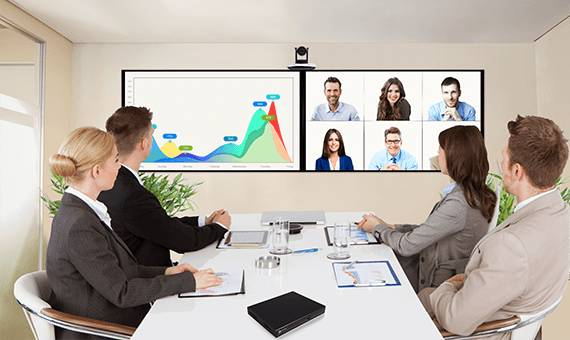Types of Video Conferencing Technology
There are many different types of video conferencing technology. As a crucial means of communication,these innovations are highly attractive to many end users and organizations. They promote live and visual connections between two or more people who are in two separate locations. Video conferencing technology has changed communication as we know it. These new technologies include:

1. Desktop Video Conferencing
This video conferencing technology is commonly used by many organizations. Desktop conferencing has been engineered to accommodate the industry's requirements for video conferencing technology. It provides H.323 voice,video and application sharing.Desktop video conferencing also comes with easy installation features,add-in boards,and bulky hardware. Known as the most affordable conferencing technology,it is convenient for many users. Those who do not have a desktop can also hold a video conference via a laptop. This kind of flexibility makes this technology highly preferable for many people. Both desktops and laptops have inbuilt microphones and speakers,which facilitate better communication. The option is very popular with people on-the-go and typical office workers.2. Integrated Video Conferencing
Integrated systems represents a new video conferencing technology that is often used in classrooms or conference rooms that have different participants. It comprises of a centralized location wiring,routed processors,the main camera and other peripheral video sources. These configurations are equipped with multiple video conferencing features.
3. Monitor Codec
This is one of the best types of video conferencing technology because it offers the least disruptive solution for conferencing systems on demand. It comes with a double-duty hardware that saves time by converting your computer to video call display when needed and reverting it back to the monitor when the video call has ended.
4. Codec
This type of video conferencing technology uses an external display,camera,and microphone. It is a better—suited option for those who like to walk around while on call because the codec allows for the freedom to do this. However,the Codec must be at both the source and the destination of a communications link. In order for a video conferencing to be successful,the two participants must negotiate their video and audio codecs at the beginning of the connection. The most common Codec video conferencing applications are H.264,H.261 and H.263+.
5. Room-based Technology
If multiple people want to communicate through video conferencing then room technology is exactly what they need. However,with the system,the following considerations should always be made:
a) How many sites will be on a video call?
b) How many locations will initiate a call?
c) How many displays will be used?
This technology has a powerful room-based video conferencing system that will let users host high-quality calls in an effortless manner.
6. Telepresence Video Conferencing
Telepresence video conferencing refers to a series of technologies that allows those in communication to feel as if they were present or physically talking to each other. This is the closest representation of a lifelike meeting as all participants are making eye contact with each other and can interact on a personal level.
7. Multiway Technology
Multiway is a true representation of new video conferencing technology. This is especially beneficial for businesses that have been established in different locations and wish to include several video collaborative meetings. Due to the fact that more than one video conferencing system in call,multiway capabilities are needed. Many manufacturers offer 4-way multiway technology solutions. However,it is important to look for flexibility and go with manufacturers who also offer 6-way and 8-way capabilities. This technology accommodates many people in different business locations in order to maximize productivity.
8. Data-sharing
This video conferencing technology is ideal when it comes to giving presentations during the video conference. It comes with data-sharing and high interaction capabilities. It allows for:
a) Uploading of videos for quick sharing during video conferences.
b) Sharing of documents,spreadsheets and recorded live sessions in real-time.
c) Scaling of shared video clips to an ideal size.
Data-sharing video conferencing technology not only allows people to talk from remote locations but also share important data and information.
Conclusion
Video conferencing comes with many tangible benefits for businesses and individuals. These different types of video conferencing technology have paved way for more efficient meetings and a stronger sense of community among business contacts. On a personal level,they have facilitated a face-to-face connection that allows the participants to develop a new sense of familiarity with individuals who are far away from them or those they have never met in person.